News
Microsoft Broadens Partnerships with New Microsoft Surface Devices
- By Kurt Mackie
- October 03, 2019
Microsoft unveiled its coming Surface PC and device innovations on Wednesday, which also showcased partner efforts.
The details were described in a New York City presentation on Wednesday, fronted by Satya Nadella, Microsoft's CEO, and Panos Panay, Microsoft's chief product officer overseeing the Surface line. The event introduced five new devices that will be coming this fall in time for the holiday season: the Surface Laptop 3 (with 13.5-inch or 15-inch display options), Surface Pro 7, Surface Pro X and Surface Earbuds. It also described two new portable dual-screen devices, the Surface Duo and Surface Neo, which will be arriving in time for the 2020 holiday season.
See the "New Products" section below for some specs and pricing. Partner efforts shined behind the scenes as Microsoft described customizing processors with AMD and Qualcomm for some of its Surface machines. Also, Microsoft's new Windows 10X operating system variant will get used by original equipment manufacturing partners for building new foldable portable devices.
Windows 10X
The Surface Duo and Surface Neo, which are designed to take advantage of foldable screens, are notable for running the Windows 10X operating system. Microsoft described this OS as "an expression of Windows 10" for use with dual-screen PCs. The new Windows 10X OS also apparently uses the Linux-based Android OS to some extent, with Microsoft stating that "with Surface Duo we are building upon Android to marry cutting edge hardware with familiar software and services," per its announcement.
Windows 10X didn't get much description, but possibly it's something like the rumored "Windows 10 Lite (Santorini)" OS that has popped up in various press stories over the last year or so. Veteran Microsoft reporter Mary Jo Foley apparently has the inside scoop that Windows 10X is just a more modular form of Windows 10 and it's different from the rumored "Windows Core" OS, according to this ZDNet article. She also said that Windows 10X isn't the same thing as Windows 10S (or "Windows 10 in S Mode"), which is Microsoft's sandboxed OS for running Windows Store apps.
Windows 10X-based foldable devices will be coming in the fall of 2020 from various hardware original equipment manufacturers, on top of Microsoft's offerings. Microsoft indicated that Windows 10X systems will come from "ASUS, Dell, HP and Lenovo." They'll use Intel processors and will "vary in size, design and specs."
Contrary to what might be expected, the announced Surface Pro X device runs the Windows 10 OS. It doesn't run Windows 10X.
Surface Options
Microsoft is starting to broaden the processor options with this batch of Surface devices. For instance, the Surface Laptop 3 with the 15-inch screen has an option to use a new "AMD Ryzen Microsoft Surface Edition" processor, which Panay described as the fastest processor for any laptop in its class today. The Surface Pro X uses a new "Microsoft SQ1" ARM-based processor that was codesigned with Qualcomm.
Across the new Surface product line, Microsoft has added a fast-charging feature. It's said to charge a battery to 80 percent of capacity in about an hour's time.
Microsoft touted the use of the Windows Autopilot preprovisioning service for Surface devices, which dispenses with having to manage PC images. It also highlighted the availability of the Surface Enterprise Management Mode for IT pros, which lets them configure and manage the Unified Extensible Firmware Interface settings of Surface devices.
One new aspect is the ability to repair Surface machines to some extent. For instance, Microsoft added the ability to replace the device's solid-state drive (SSD), which had been a top customer request.
More talk about Surface hardware options can be found in this Microsoft Mechanics video, featuring Jochen Siegl, senior director on the Surface engineering team.
Center Stage
During the New York City event, Nadella said that Microsoft began its Surface device efforts by putting people at center of the device experience, and using form and function to drive the next level of productivity. Microsoft added support for creative content with the Surface Studio devices. It added its Hololens mixed reality device. The idea behind its hardware efforts was to build experiences that span all devices, which includes using inking, touch, gestures and gaze natural user interfaces. Nadella concluded his opening talk that the next decade with Surface will be about creation and amplifying what we can do as humans.
Panay took a personal touch at the event, describing his daughter's piano playing as being akin to being as centered when using a new Surface device. He showed off various aspects of the devices on stage and wandered up the aisles. He said that the Surface Laptop 3 devices would be available on October 22.
New Surface Products
Here are some of the specs and pricing for the new coming Surface products that were announced.
Surface Laptop 3
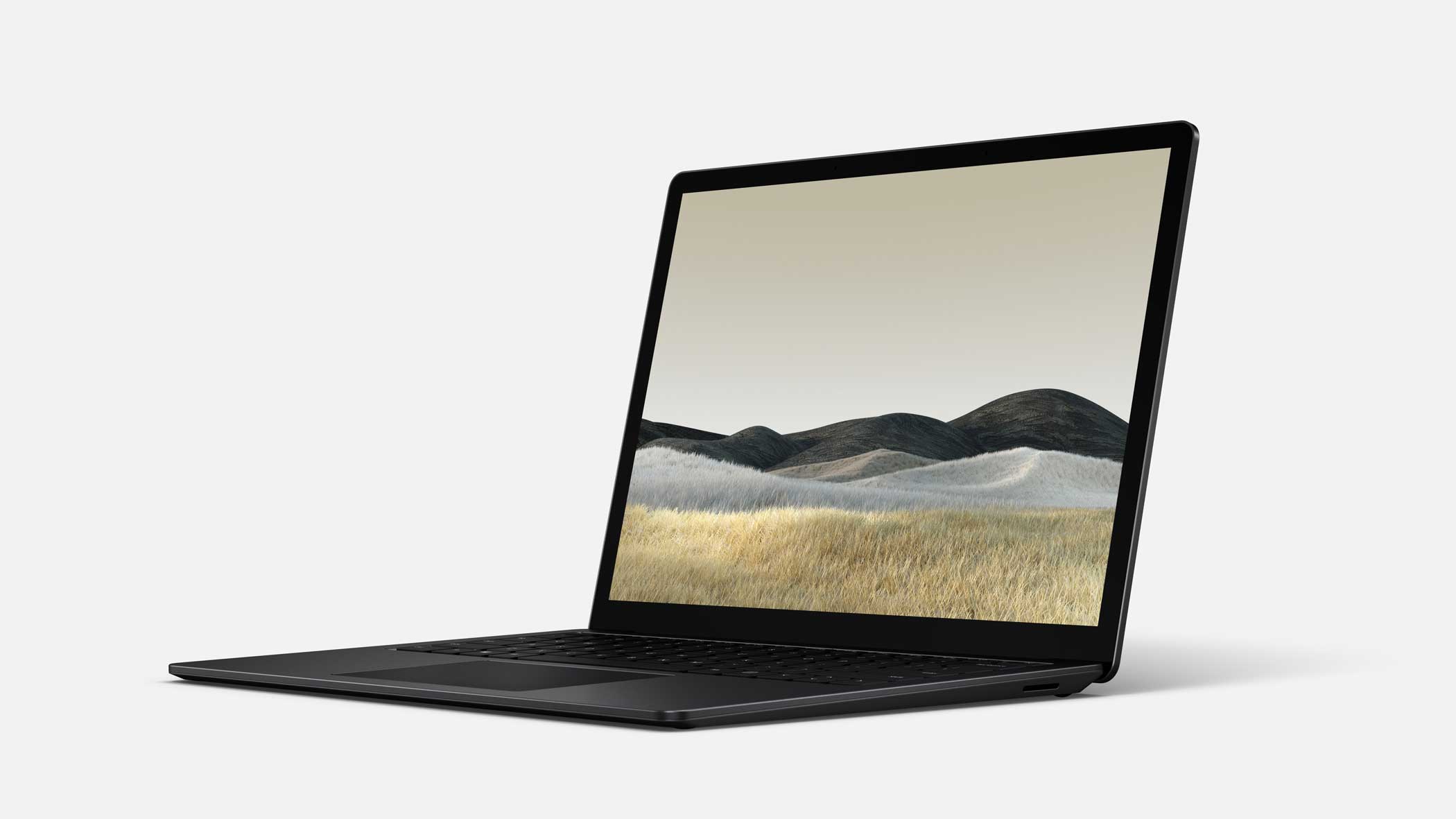
Surface Laptop 3 computers will be coming this holiday season (October 22, according to Panay) with 13.5-inch or 15-inch PixelSense touchscreen display options. The 13.5-inch model will be available with quad-core Intel 10th generation i5 or i7 processors, up to 16GB memory, SSD storage up to 1TB, one USB-C port and it'll have a battery life estimated at 11.5 hours. The 15-inch model has similar specs, but it will ship with either the Intel processors or a custom AMD Ryzen 5 mobile processor (called the "AMD Ryzen Surface Edition processor" by Microsoft), and has an option for up to 32GB of memory. Surface Laptop 3 machines will have Windows 10 Home or Pro edition operating systems. Surface Laptop 3 machines will start at $999 (13.5 inch) and $1199 (15 inch).
Surface Pro 7
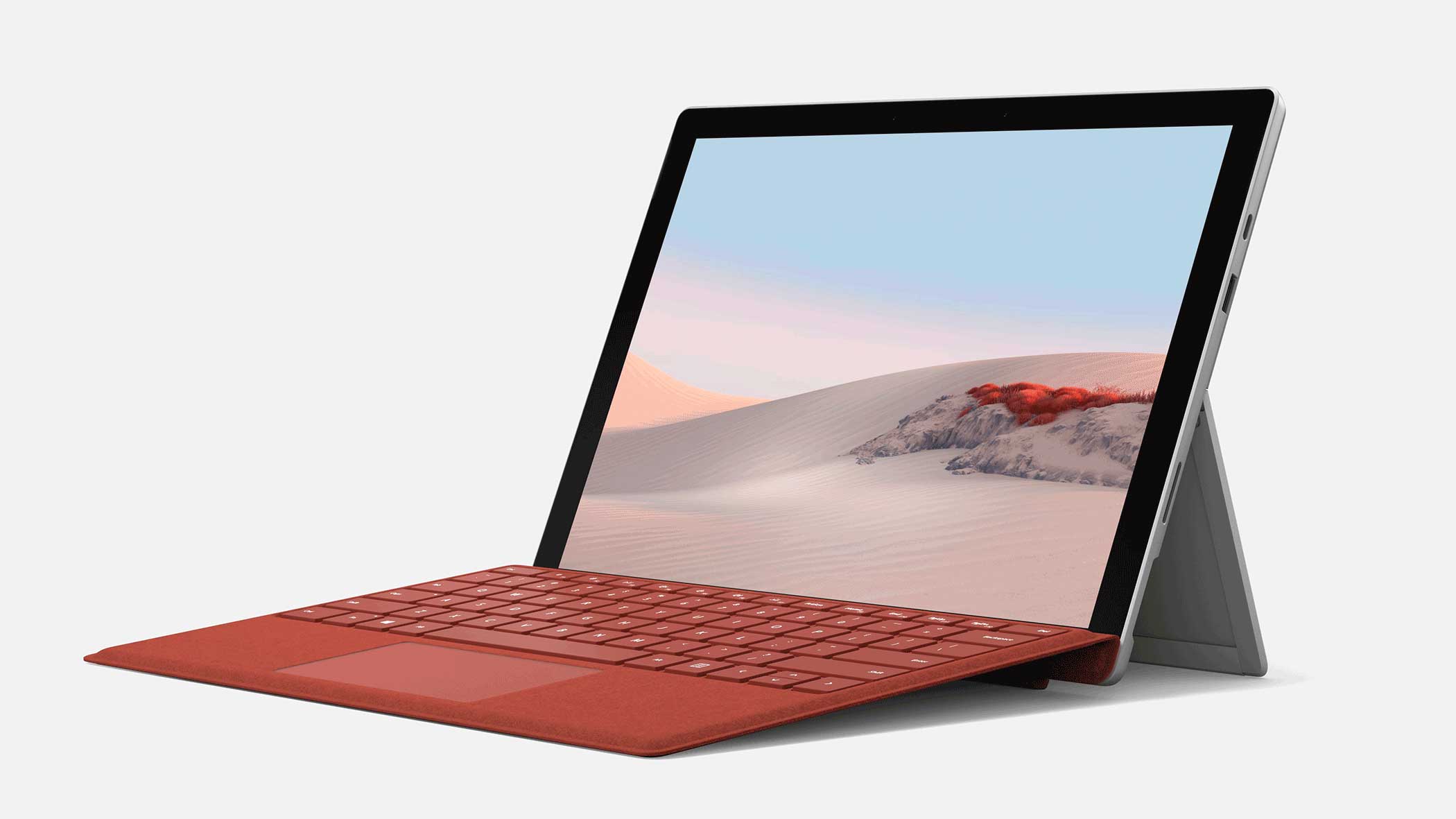
Surface Pro 7 two-in-one computers will be coming this holiday season with 12.3-inch PixelSense touchscreen displays. The Intel Core processor options will include a dual-core i3 or quad-core i5 or i7. The machines will support memory up to 16GB and SSD storage up to 1TB. It'll have ports for USB-A and USB-C and a 3.5mm headphone jack. Battery life is estimated at 10.5 hours. Windows 10 Home or Pro edition operating systems are supported. Surface Pro 7 machines will start at $749.
Surface Pro X
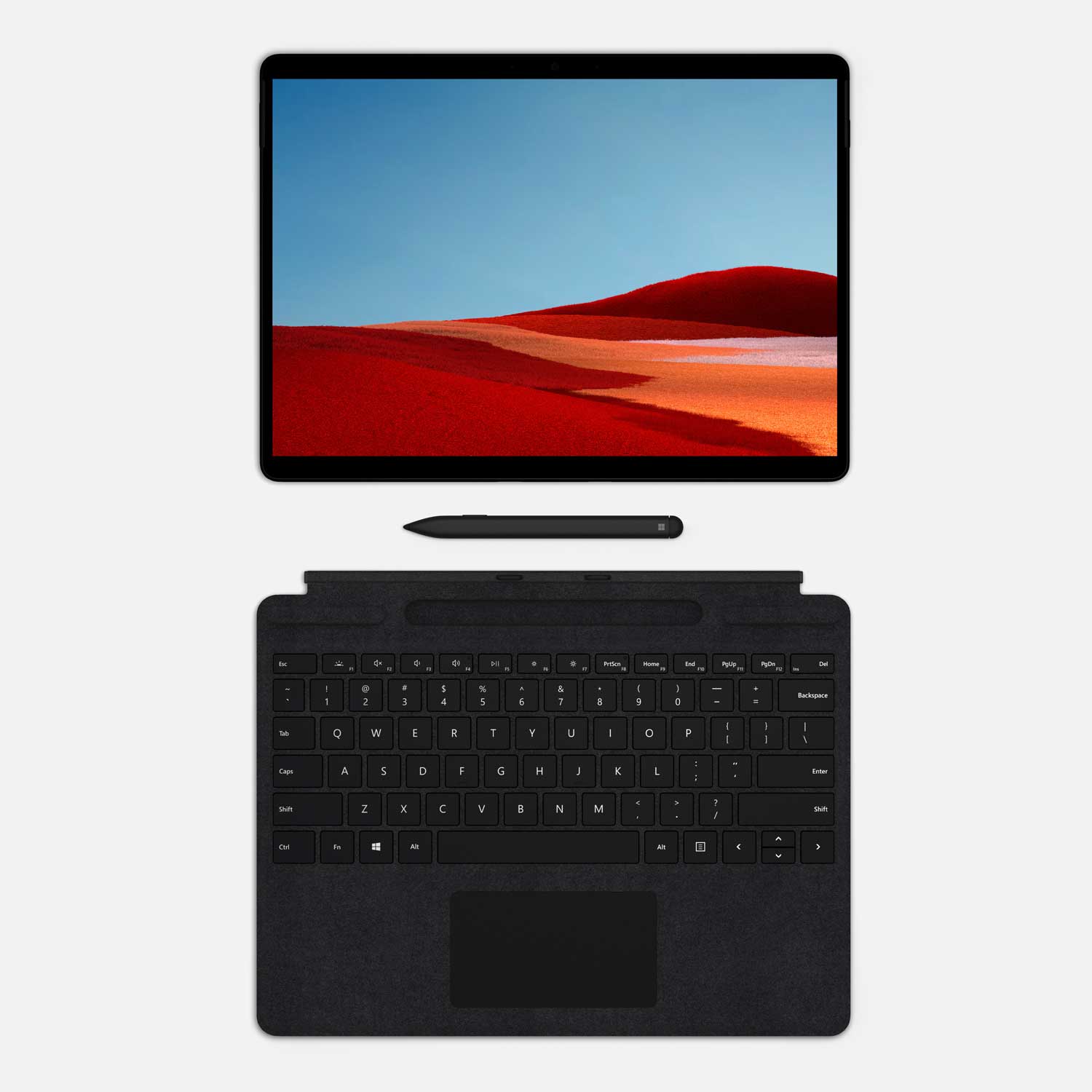
Surface Pro X two-in-one computers will be coming this holiday season with 13-inch PixelSense touchscreen displays and are billed as having the thinnest form factor of the product line at 7.3mm. They also come with built-in LTE wireless connectivity. The optional keyboard, with a groove for holding a Slim Pen drawing device, is an accessory. These machines are unique in the product line for having a custom ARM-based processor that Microsoft built with Qualcomm, called the "Microsoft SQ1 processor," which supports "2 teraflops of graphics processing power." Memory is supported up to 16GB and SSD storage is supported up to 512GB. Battery life is estimated at 13 hours. They will run Windows 10 Home or Pro editions. Surface Pro X machines will start at $999.
Surface Earbuds
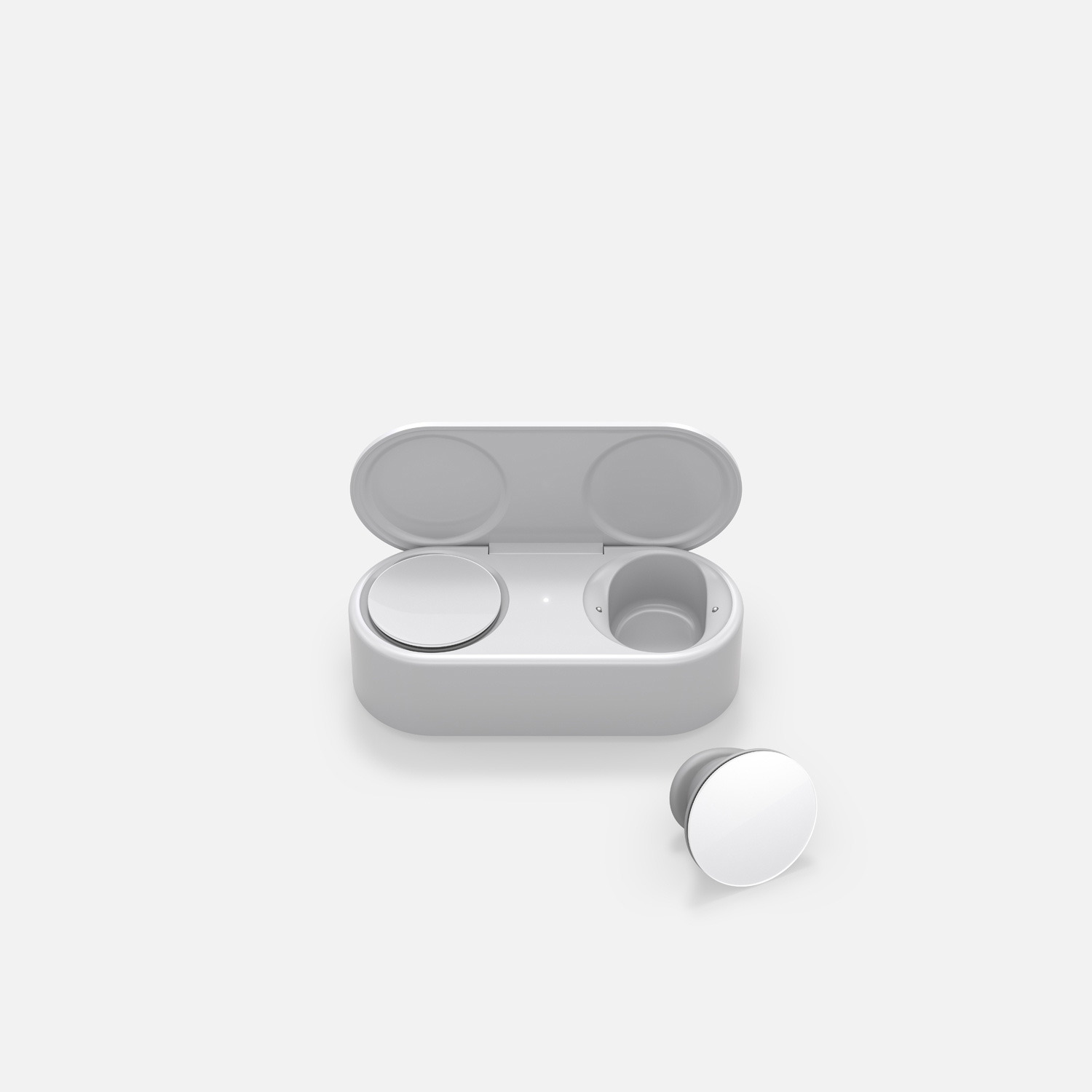
Surface Earbuds devices combine headphone speakers with a microphone in each earbud, and will be coming this holiday season. They'll pair with Android phones to tap the Spotify music service. Office 365 subscribers using Cortana (in certain markets) will be able to use Surface Earbuds to access Outlook calendars via voice commands. Battery life is estimated at eight hours, but the earbuds come with a wireless charging case that permits "two 8-hour charges." Surface Earbuds are priced at $249.
Surface Duo
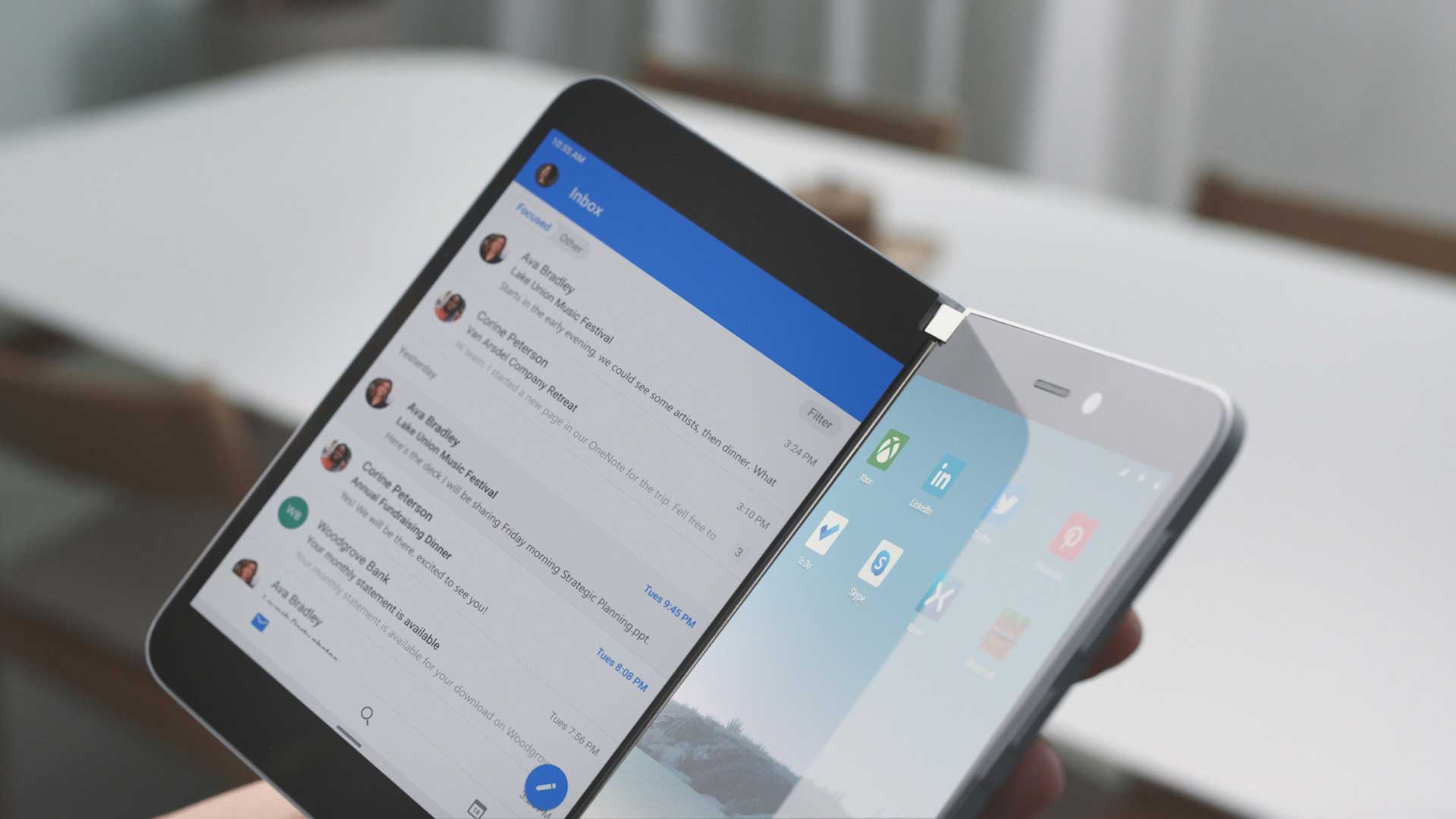
Surface Duo devices are pocket-size computers that can make phone calls. They'll be coming in the 2020 holiday season and will have "two paper-thin 5.6 inch screens that unfold to 8.3 inches." These devices are notable for running the Windows 10X operating system, which is a new OS for dual-screen PCs. Microsoft described Windows 10X as "building upon Android."
Surface Neo
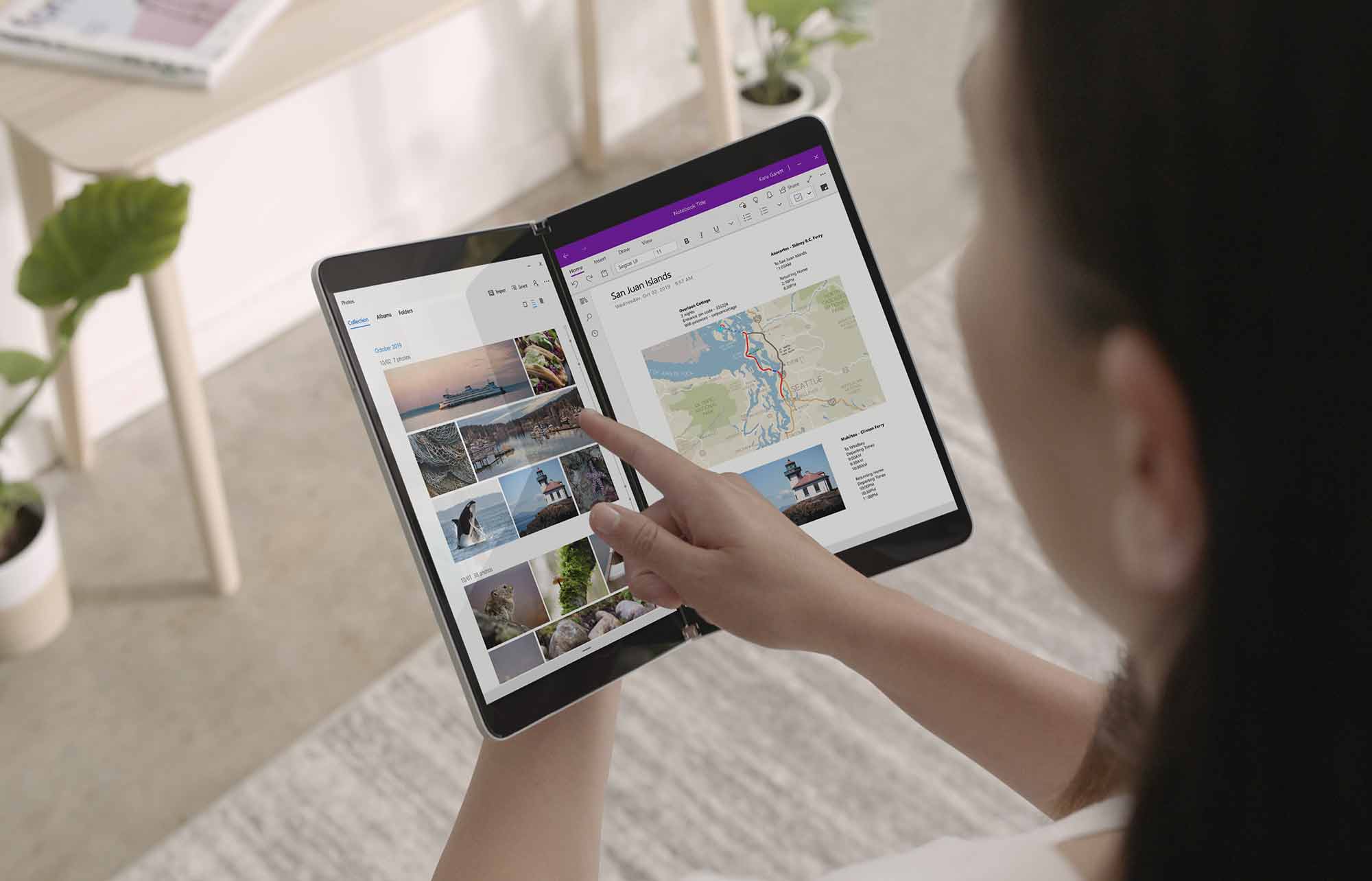
Surface Neo foldable computers will be coming in the 2020 holiday season and support productivity applications and multitasking "like a true PC." They will have two nine-inch screens that can open to a 13-inch display. They'll work with a removable keyboard and Surface Pen devices. These devices are notable for running the Windows 10X operating system, which is a new OS for dual-screen PCs. Microsoft described Windows 10X as "building upon Android."
About the Author
Kurt Mackie is senior news producer for 1105 Media's Converge360 group.